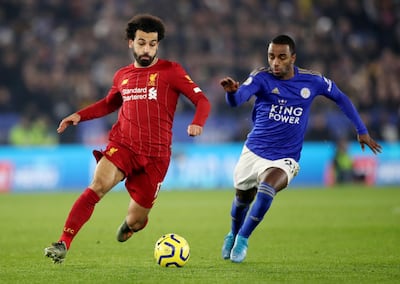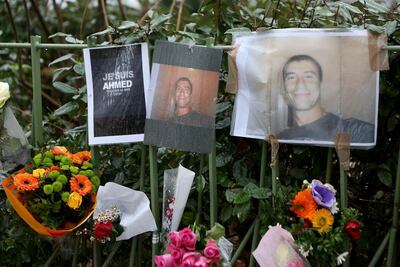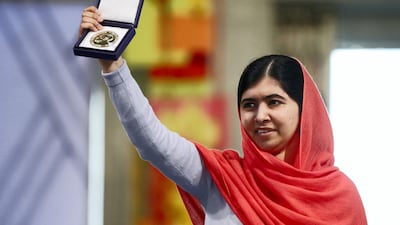On a bright, sunny day in May 2016, the new mayor of London, Sadiq Khan, was sworn in at Southwark Cathedral on a Quran. He had faced what had been described as a dog-whistle Islamophobic campaign but instead of being defensive, he was proud of his identity. "There is no clash of civilisation between Islam and the West. I am the West, I am a Londoner, I'm British, I'm of Islamic faith, Asian origin, Pakistani heritage."
His words captured the zeitgeist of a young, faithful and confident Muslim identity that became the hallmark of the 2010s. Young Muslims coming of age over the past decade from America to Abu Dhabi to Australia vigorously railed against the US war on terror and the "clash of civilisations" theory, in which political scientist Samuel Huntington argued that wars would be waged between cultures and not countries. Yet instead of recoiling from the harsh global spotlight on their identity, they dug deep into their Islamic values and have been busy creating a vibrant, optimistic and warm-hearted worldview, in which their own lives were proof that the notion of an existential incompatibility was a toxic myth.
Individuals like Malala Yousafzai became a beacon for female education winning a Nobel prize. Her faith and heritage were always up front and centre. She was part of a rising tide of Muslim women taking on leadership roles, such as Ilhan Omar and Rashida Tlaib in the US, and Halimah Yacob, Atifete Jahjaga and Ameenah Gurib in Singapore, Kosovo and Mauritius respectively.
This was not just about politics and certainly not about one-off individuals, though. The new Muslim generation of the 2010s cut across all sectors.

Sports was a huge theme: American fencer Ibtihaj Muhammad won a bronze Olympic medal and had a Barbie doll created in her likeness. Global football star Mohamed Salah inspired chants among football fans that "if he scores another few, then I'll be Muslim too".
Young Muslims emerged as social media influencers with following of millions seeking out ways to live this new faithful modern life. Marvel Comics released the first ever female superhero in the shape of Kamala Khan as Ms Marvel, commissioned and written by Muslim women. Star Wars actor Riz Ahmed spoke openly about the challenges of Muslim representation and diversity. Nadiya Hussain triggered a cultural moment in the UK by winning its most beloved Great British Bake Off competition. Comedians like Hasan Minhaj were up front about their Muslim heritage. Apple released a hijabi emoji, after being pitched the idea by 15-year-old Saudi-German Rayouf Alhumedhi.
Even as the debates about what Muslim women should or should not wear continued unabated, with bans being imposed on burkinis, niqabs and hijabs, "modest fashion" came to be one of the defining industry trends of the decade. Muslim women built a whole new global industry worth in excess of $270 billion. Its most famous face is Halima Aden, a Somali-American hijab-wearing supermodel who walked at the New York Fashion Week and has been the cover face for Vogue.
There were heroes aplenty. Muslim police officer Ahmed Merabet was killed as he faced down the perpetrators of the Charlie Hebdo office attack. "Hero Imam" Mohamed Mahmoud stood watch over the perpetrator of an attack on a mosque in Finsbury Park in north London. Muslims formed a human chain around churches in Egypt to protect their Christian brothers and sisters in their worship.
There were some challenges and difficult conversations that were begun, particularly with regard to women, diversity and their acceptance within the global ummah. The celebrity leaders that emerged over the decade came under scrutiny, triggering movements parallel to the #MeToo movement under hashtags like #MosqueMeToo.

Among the hardest of these conversations was tackling extremism. When terrorists claimed their horrors were being perpetrated to further Islam, these young Muslims pushed back with campaigns and outreach that this was not Islam, all the while having to deal with backlash. No one cheered louder at the end of Osama bin Laden and ISIS than Muslims, who had been their primary victims.
All of this has been in the face of an alarming rise of the far-right and a blatant Islamophobic narrative. Its emergence is clear in Europe but the terrifying persecution especially at the state level has been escalating around the world and most notably across Asia in recent years. It is also impossible not to mention the political, natural and humanitarian crises in areas such as Palestine, Kashmir, Syria, Yemen and Pakistan. This list is by no means exhaustive.
The emergence of this young Muslim generation that is strong, positive, faithful and proud of its identity is one of the most important and significant developments of the past decade – even though it has slipped under the world’s radar. It is a story of hope and humanity, which means that we should exit this decade with optimism. What has been achieved should give us renewed vigour for the future, when the energies of the world’s 1.8 billion Muslims will be required not just to tackle their own huge challenges but the challenges of humanity as a whole.
Shelina Janmohamed is the author of Love in a Headscarf and Generation M: Young Muslims Changing the World


